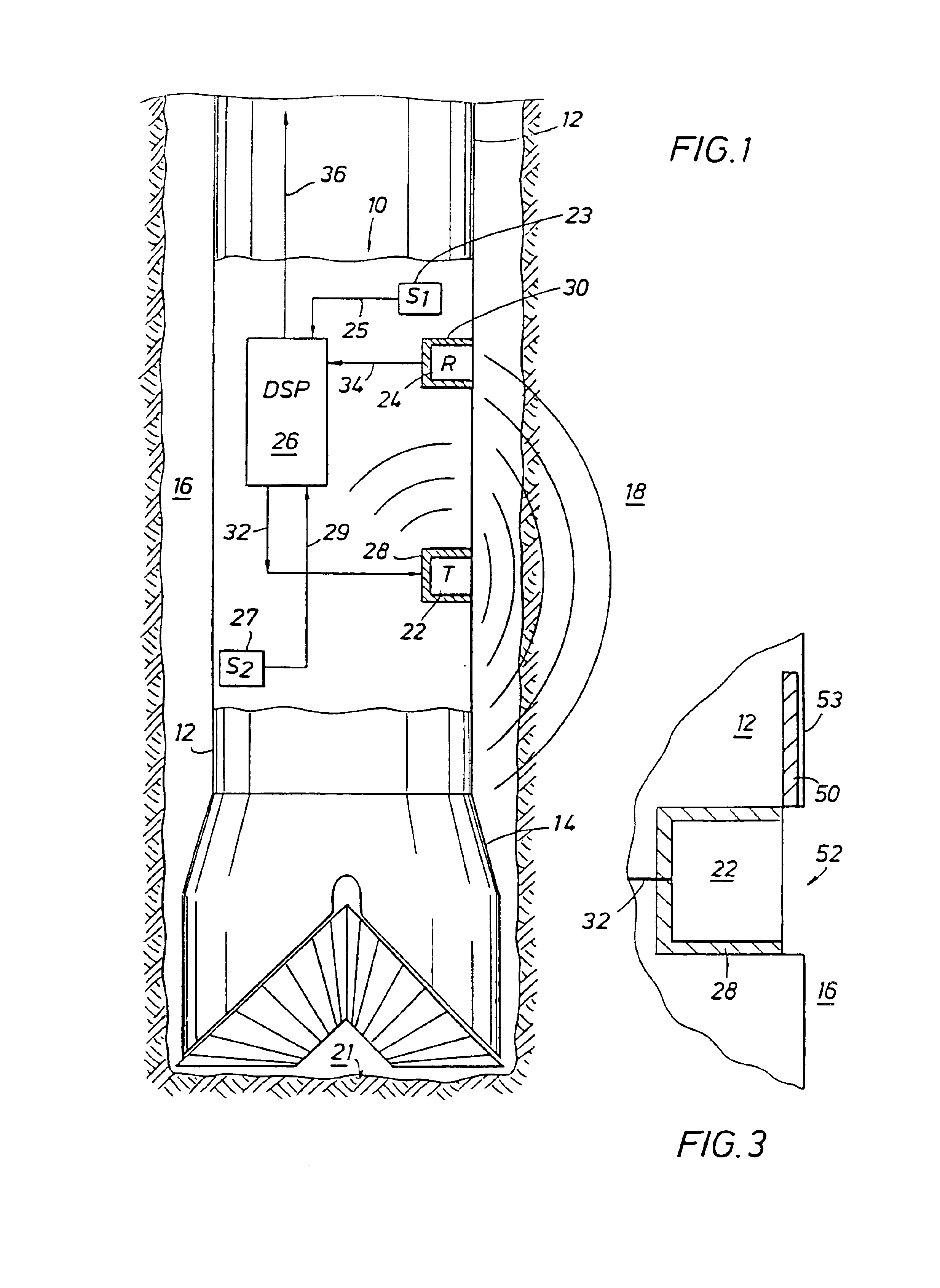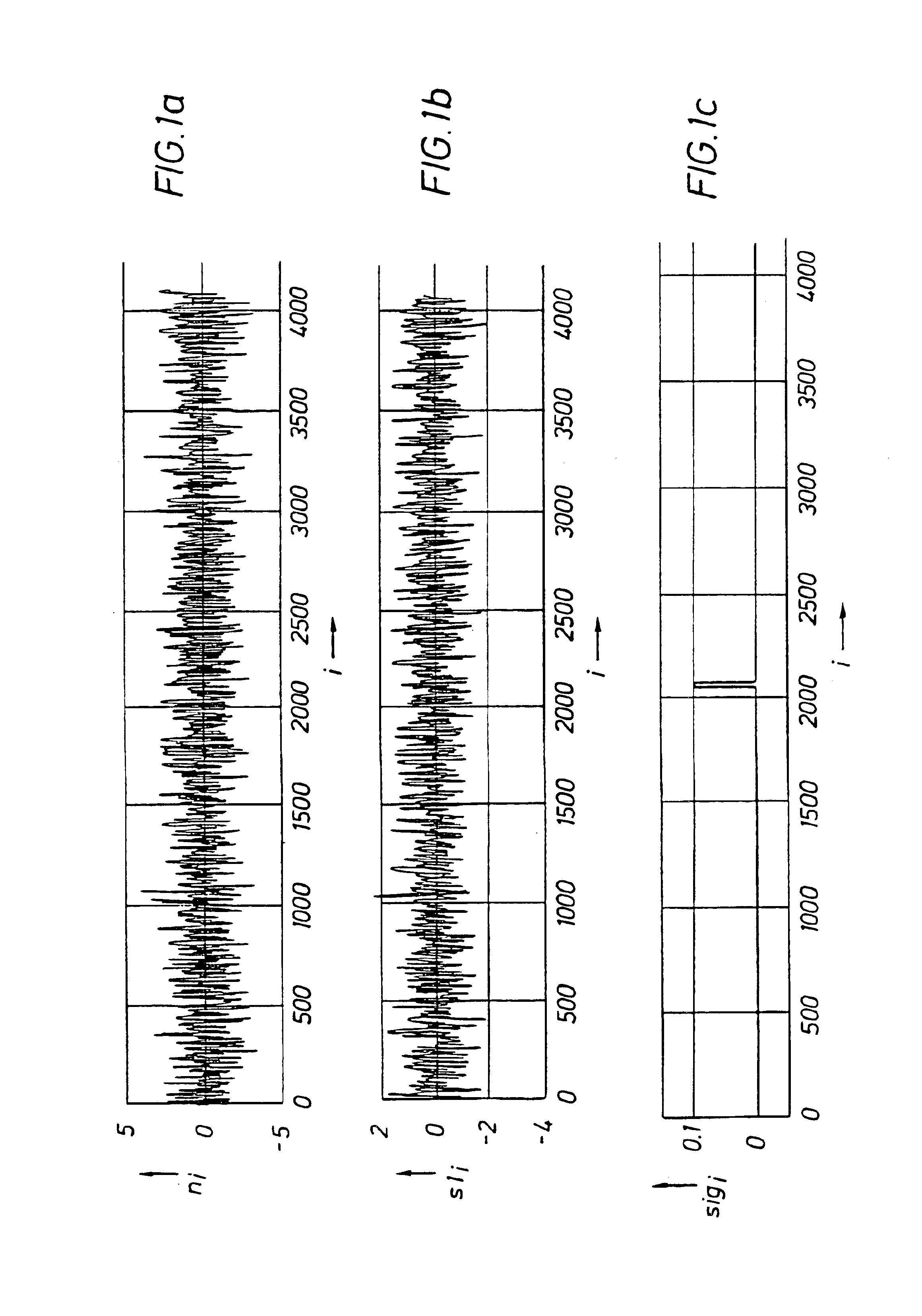Method and apparatus for cancellation of unwanted signals in MWD acoustic tools
a technology of unwanted signals and acoustic tools, which is applied in the field of improved acoustic downhole logging apparatuses, can solve the problems of inability to alter the structural design of wireline tools, difficulty in distinguishing whether a signal has traversed the borehole, the formation or the tool body, and the delay of the signal. signal, not only delayed, but attenuated
- Summary
- Abstract
- Description
- Claims
- Application Information
AI Technical Summary
Benefits of technology
Problems solved by technology
Method used
Image
Examples
example 1
Depending upon whether the borehole 16 or formation 18 characteristics are to be measured, the processor 26 is programmed with the transmitter noise propagating through either the borehole 16 or formation 18 as compressional waves, and its corresponding propagation factor in order that the preferred signal may be determined by eliminating the compressional wave noise propagating along and through the tool body and through either the borehole 16 or formation 18. The mud, borehole 16 and formation 18 properties are incorporated into the propagation factor whenever a noise signal propagating through the borehole 16 or along the interface between the borehole 16 and formation 18 must be determined. Whenever the noise signals propagate through the tool body only, the propagation factor may be analytically determined or preferably by experimentation using a noise measurement sub 60 (FIG. 4) without regard to the drilling fluid (mud), borehole 16 and formation 18 properties. Similarly, the...
example 2
Typically, multiple different noise signals propagating from the same direction are present at the receiver 24 or, alternatively, the noise signals propagate toward the receiver 24 from opposite directions. In either case, an additional second sensor 27 is required in order to determine the noise signal at the receiver 24. In FIG. 1G, a process diagram is shown for simplifying the process carried out by the processor 26. In the following example, a noise signal propagates from the drill bit 14 up the drill collar 12 into the tool body 10 and a noise signal propagates from above the drill collar 12 down into the tool body 10 from precessional movement of the drill collar 12, or from any other cause. The noise signals are n1(t) and n2(t) originating at different points above and below the tool body 10. The first and second sensors 23 (p1) and 27 (p2) are shielded from the acoustic signals traversing the formation 18, and the receiver 24 (p3) is in acoustic communication with the acous...
example 3
If the particular noise signals to be eliminated propagate as compressional waves through the borehole 16 or leaky-p, tube and / or pseudo-Rayleigh waves at the interface between the borehole 16 and formation 18, then a determination of these particular noise signals must be determined using another method generally depicted by the process diagram in FIG. 1H.
Since sensors are not available which can directly detect a particular noise signal propagating in the borehole 16 and the first and second sensor 23 and 27 are isolated from any acoustic signals outside the tool body 10, the first and second sensors 23 and 27 are positioned to detect noise signals propagating through the tool body 10 as compressional wave noise which are used as a reference to approximate the noise signals propagating outside the tool body 10 in the borehole 16, for example, as from the drill bit. The method explained in EXAMPLE 2 above may be used to determine one or more determined noise signals propagating in ...
PUM
 Login to View More
Login to View More Abstract
Description
Claims
Application Information
 Login to View More
Login to View More - R&D
- Intellectual Property
- Life Sciences
- Materials
- Tech Scout
- Unparalleled Data Quality
- Higher Quality Content
- 60% Fewer Hallucinations
Browse by: Latest US Patents, China's latest patents, Technical Efficacy Thesaurus, Application Domain, Technology Topic, Popular Technical Reports.
© 2025 PatSnap. All rights reserved.Legal|Privacy policy|Modern Slavery Act Transparency Statement|Sitemap|About US| Contact US: help@patsnap.com



